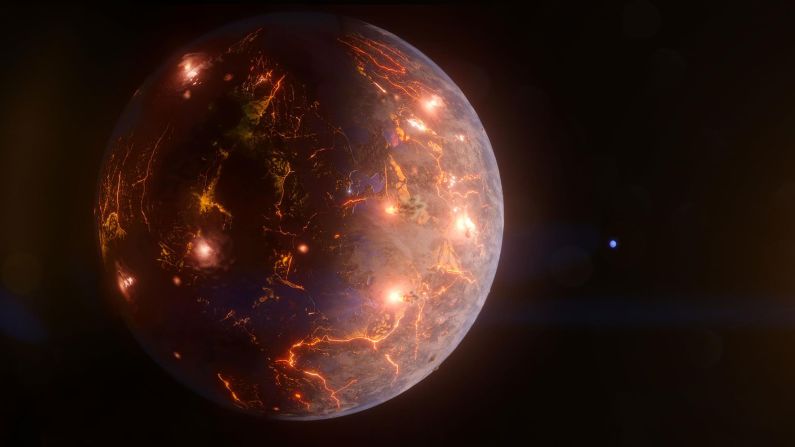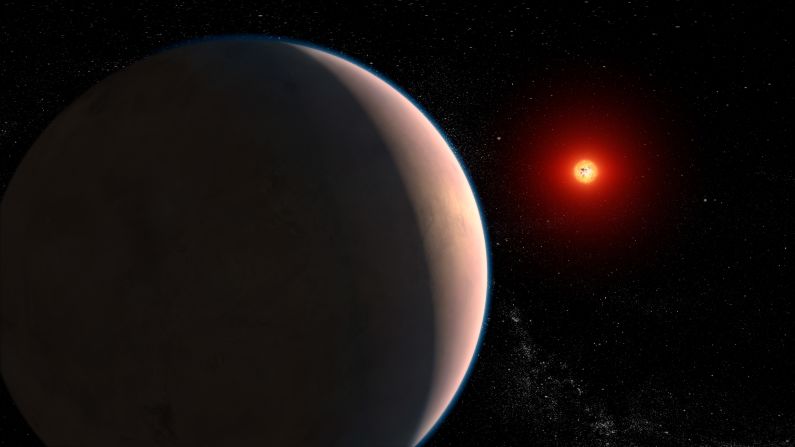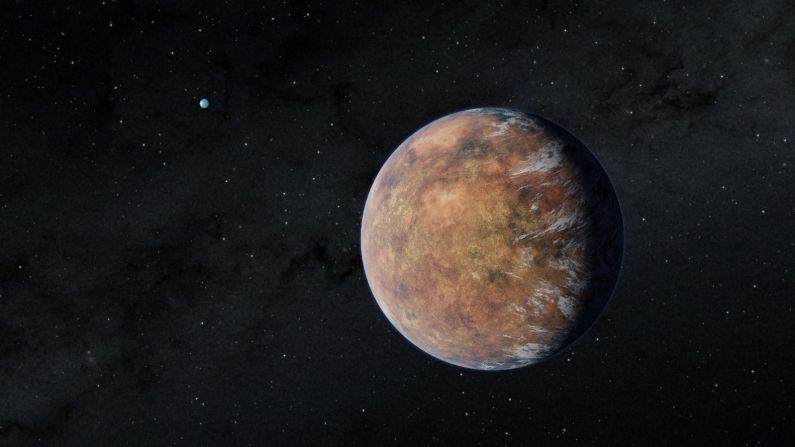Astronomers have been able to peer inside a planet for the first time, according to a new study.
They discovered the exposed planetary core that was likely once at the center of a gas giant orbiting a distant star.
The core is similar in size to Neptune and was found closely orbiting a star similar to our sun located 730 light-years away. In fact,it’s so close to the star that it completes one orbit around it in 18 Earth hours(compared to the Earth’s orbit of 365 days around our sun). And the core’s surface temperature is 2780.33 degrees Fahrenheit, or 1800 Kelvin.
The study published Wednesday in the journal Nature.
Astronomers found the core, called TOI 849 b, when searching through data collected by NASA’s Transiting Exoplanet Survey Satellite (TESS). The transit method revealed the planet as it created a dip in brightness while passing in front of its star.
But the location of this object was intriguing because it was found in the Neptunian desert. To be clear, this isn’t a barren region on Neptune. Instead, it’s a region close to stars where Neptune-size planets can’t be found.
The researchers followed up by analyzing the object using the HARPS instrument at the European Southern Observatory in Chile. The High Accuracy Radial velocity Planet Searcher, known as the HARPS spectrograph, can detect the mass of planets using a technique astronomers call the “Doppler wobble” or radial velocity method.
This so-called wobble occurs when the star moves back and forth due to the gravitational pull of the planets orbiting it. The HARPS instrument can measure these tiny wobbles.
Inside out
They found the object was two to three times higher than the mass of Neptune. But it was also very dense, so all of that material created an object the size of Neptune.
“We would expect a planet this massive to have accreted large quantities of hydrogen and helium when it formed, growing into something similar to Jupiter,” said David Armstrong, lead study author and Ernest Rutherford Fellow at the University of Warwick.
“The fact that we don’t see those gases lets us know this is an exposed planetary core. This is the first time that we’ve discovered an intact exposed core of a gas giant around a star.”
The astronomers think this core once belonged to a gas giant that had its gaseous atmosphere stripped away, which could happen due to orbiting too close to the star or colliding with another planet.
Or it’s possible that the gas giant never formed an atmosphere, which is called a failed gas giant.
Regardless, the researchers want to follow up by studying the core using other telescopes and learn more about its composition.
“It’s a first, telling us that planets like this exist and can be found,” Armstrong said. “We have the opportunity to look at the core of a planet in a way that we can’t do in our own solar system.
“There are still big open questions about the nature of Jupiter’s core, for example, so strange and unusual exoplanets like this give us a window into planet formation that we have no other way to explore.”








































